February 17, 2017
We made our move to multi-generational living in 1998 when my husband’s parents moved into the Coach House at our estate in Chicago, The Henry Rohkam House. (There are a couple pictures of the main house in a prior post.)
Pretty quickly we settled into a routine of having meals together. When we went to work, the dogs went to Grandma and Grandpa’s (21 feet away in the Coach House) for the day.
My husband started gardening with his father. A large piece of our one-third-of-an-acre property in Chicago’s Lakeview neighborhood was turned over to cultivation. We had grapes, strawberries, corn, tomatoes, eggplant, sweet peppers, radicchio, arugula, leaf lettuce, Swiss chard, okra, hot peppers of various types, an array of herbs and other vegetables that varied year by year. The fruit trees never did very well. The kiwi thrived but never bore fruit. One of the four kiwi was accidentally injured and died. In retrospect, it was probably the male plant (there were three female and one male plant), hence no fruit.
Every fall we canned and preserved foods in various ways. We made jars of olives marinated in red wine vinegar and herbs from the garden. We made herb-infused vinegar and olive oil. We dried herbs for the winter. We froze vats of tomato sauce. I’ll admit to even freezing pesto which, while it doesn’t taste like its fresh-made cousin, is pretty awesome in the dead of a Chicago winter!
Some years there were enough strawberries to put up jam. City squirrels can be quite bold, however. I was standing alongside the garden one spring day when a squirrel, who had gone grocery shopping in our strawberry patch, literally ran over the top of my foot with a strawberry in his mouth on his way out of the produce isle.
The birds had Houdini-like skills. Despite wrapping the grape arbor in yards of netting, the birds found their way in, decimated the grapes, and escaped. The few grapes we were able to harvest were very sweet!
We built a temperature-controlled wine cellar in the basement of the Coach House. My husband made wine for a few years but stopped when work got too busy.
I started cooking more often with my mother-in-law. Every month or so, my husband’s grandmother, Noni, would come to visit for a weekend. Noni was a marvelous cook. Some dish always appeared during those weekends that I had never had before. Sausage with Cardone was one of them.
For a vegetable that has been popular since the ancient Romans, I’m surprised I’d never hear of it. I grew up eating sausage with peppers and onions. Sometimes the sausage was cooked in a tomato sauce, sometimes not. Cardone was a whole new thing!
This goes really well with polenta but it’s equally good on its own. Leftover sauce can be put on pasta or can accompany a frittata. You may notice from the pictures that we didn’t use as much sausage as called for in the recipe. We didn’t want leftover sausage but that didn’t mean we didn’t want leftover sauce! Sadly, the cardone usually all gets eaten on the first go-around but on those rare occasions where it doesn’t, I like to use it as a sandwich filling for lunch.
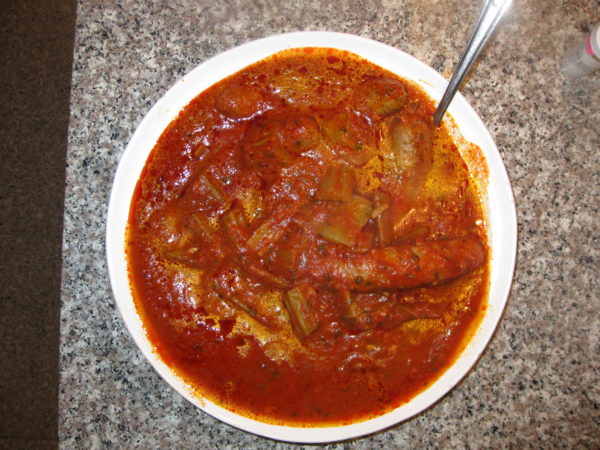
| Prep Time | 15 minutes |
| Cook Time | 2 1/2 hours |
| Servings |
people
|
- 2 1/2 lbs Italian Pork Sausage with fennel hot or sweet
- 1 bunch Cardone
- 3 tablespoons salt
- 1 pinch baking soda
- 2 tablespoons extra virgin olive oil
- 1 onion finely chopped
- 4 cloves garlic minced
- 1/2 cup minced fresh parsley
- 1/2 teaspoon dry rosemary or 1 teaspoon minced fresh rosemary
- 1/3 cup white wine optional
- 1 28 oz can tomato puree
- 1 1/2 cups water
- salt to taste
- black pepper to taste, freshly ground
Ingredients
|

|
- The starting point: cardone from the market.
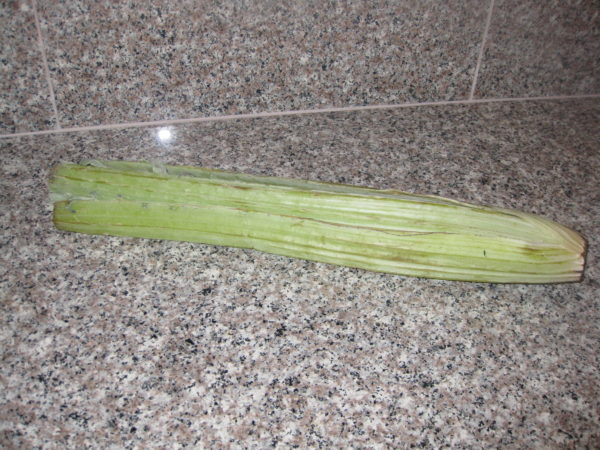
- Cut off the bottom of the cardone.
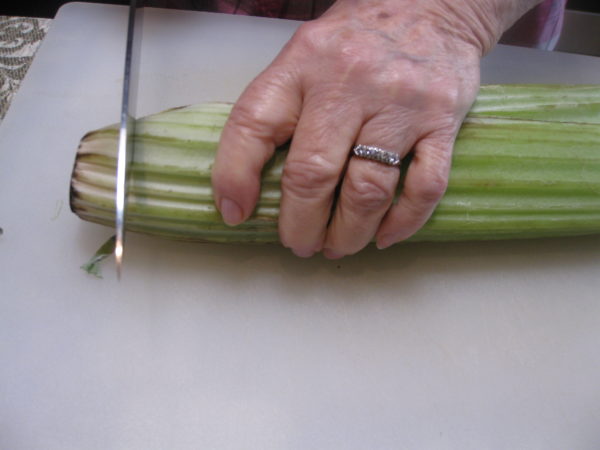
- Using a vegetable peeler (or knife if you are my mother-in-law), remove the leafy edges of the cardone.
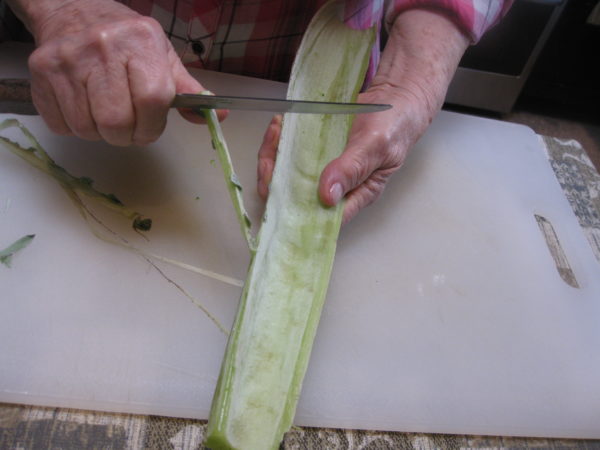
- Remove any stringy parts of each rib.
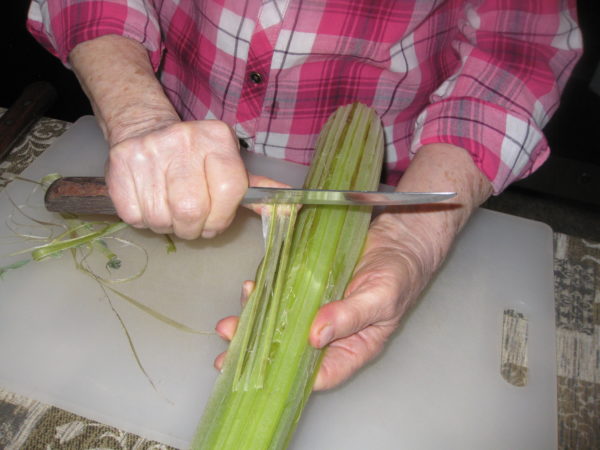
- Cut the ribs into pieces approximately 4 inch long. Wash well.
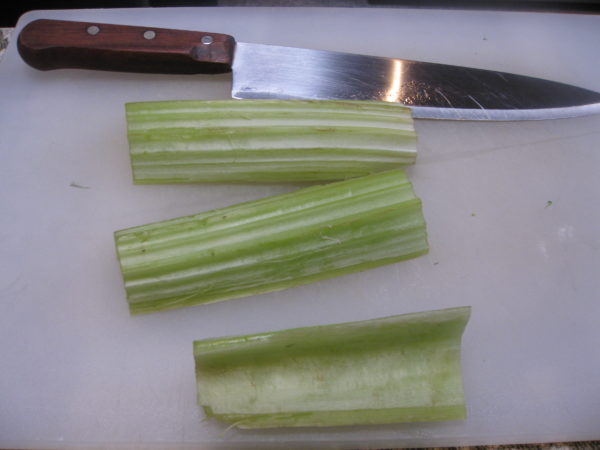
- Bring 3 quarts of water to a boil. Add 3 tablespoons of salt and a pinch of baking soda. Add the cardone and boil until you can pierce it relatively easily with the point of a sharp knife. Do not overcook the cardone as it will be cooked further with the sausage.
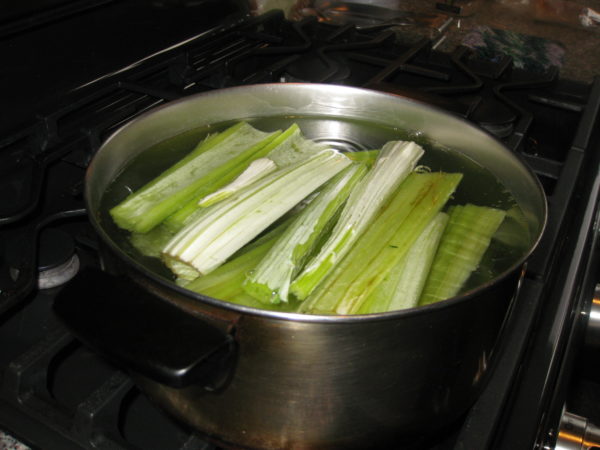
- Remove the cardone from the water. Stop cooking by putting the cardone in a bowl of ice water. When cold, cut into pieces approximately 1 ½ inches long and reserve.
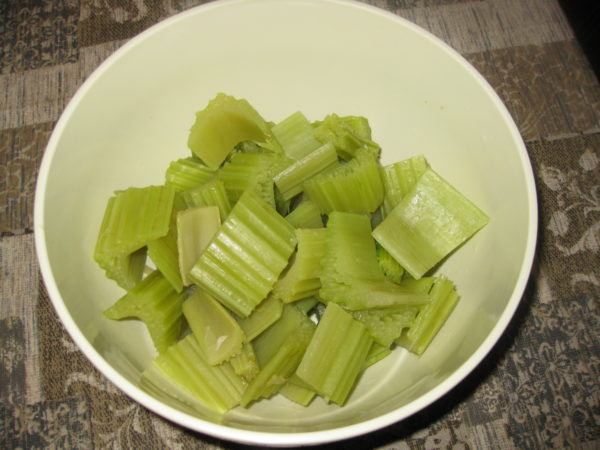
- If the sausage is not in links, cut into pieces approximately 4-5 inches in length. Using the tines of a fork, pierce the skin of each piece of sausage in several places.
- Heat the olive oil in a large, heavy-bottomed sauté pan or a wide, shallow casserole. Add the sausage and brown well on all sides.

- Remove the sausage from the pan.
- Add the onions, garlic, parsley, and rosemary to the sausage drippings in the pan. Sauté until the onions are soft and golden.
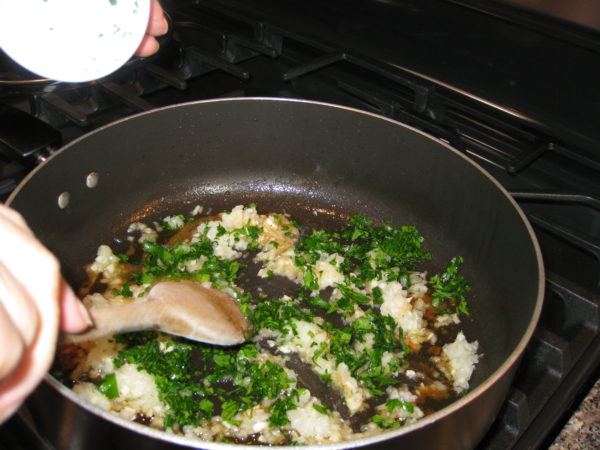
- Add the wine, if using. Allow wine to mostly cook away then add tomato puree and water.
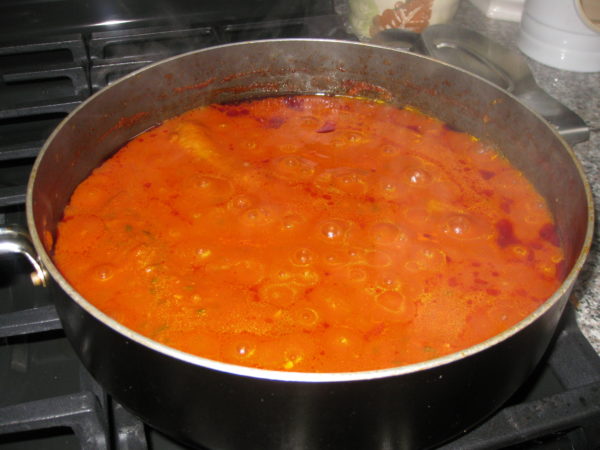
- Return the sausage to the pot with the sauce. Season with salt and freshly ground pepper. Simmer, partially covered, for about an hour.
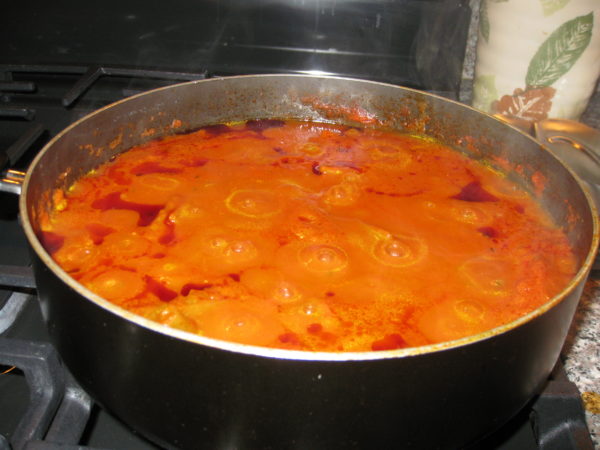
- Add the cardone. Taste for seasoning. Simmer, partially covered, until the cardone is tender, approximately 30-45 minutes.
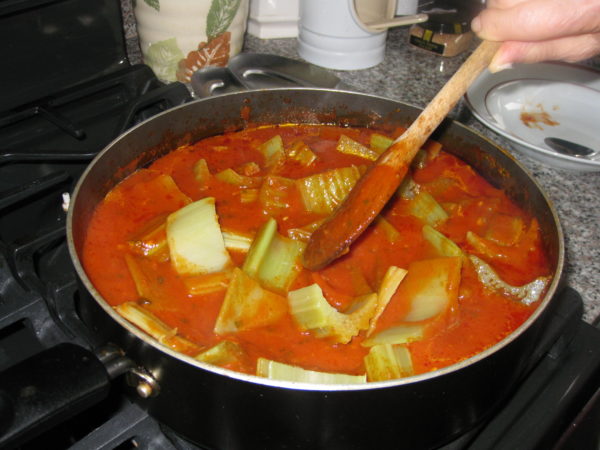
- Pour into a serving dish and bring to the table.
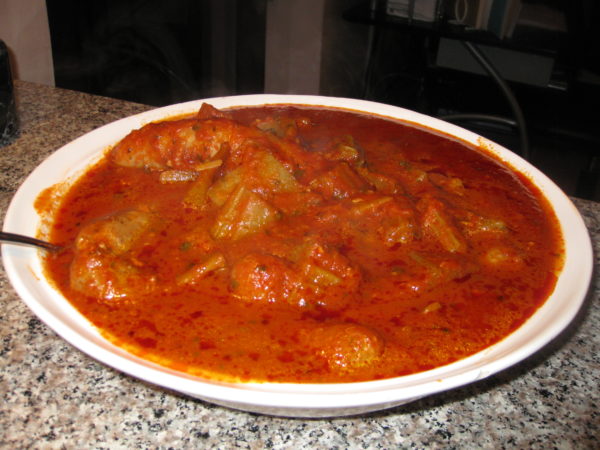
Copyright © 2017 by VillaSentieri.com. All rights reserved.

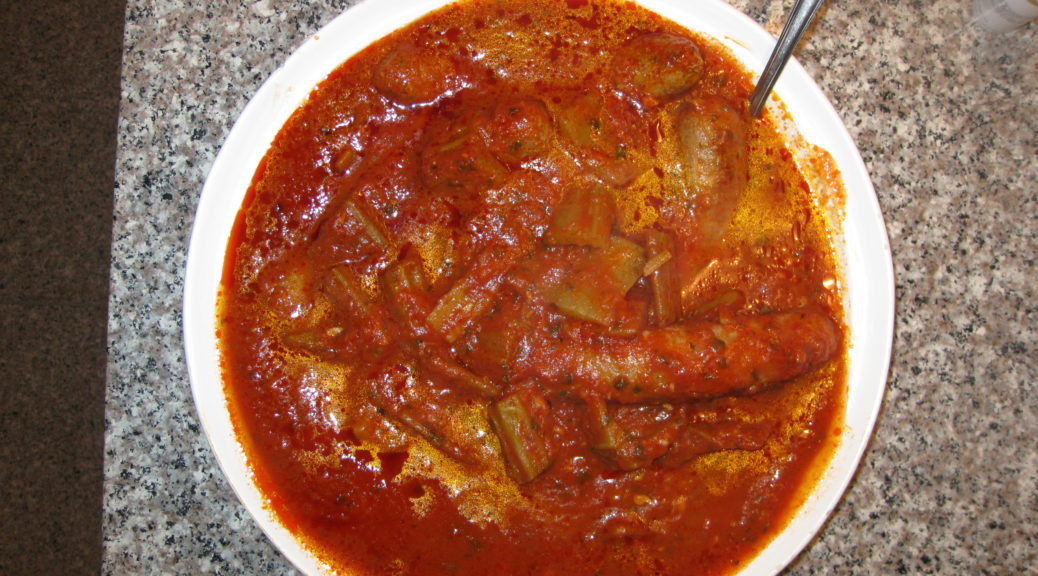
Looks delicious. I have never cooked cardoons (as I know them), but would see them in the Bastille marche in Paris when in season. I also remember Mario Batali cooking them on his show – I think he blanched them and then made a gratin (Roman style). The idea of cooking a thistle seems adventurous and appeals to me – thanks for the inspiration!
Yes, you’re right that the English word is Cardoon. I took this opportunity to change the English description of the dish as well.
What a wonderful dish! I made it last weekend with frozen cardoons from our garden last year, since it’s not quite time to harvest this year’s crop. Tomato sauce was from the last of our tomatoes this year, as was the sweet red pepper I diced and added to the sauce. My partner, who is Siciliano and Piemontese, raved, as did my other dinner guests. We just finished leftovers today, and they were perhaps better than the day I first served the cardone. Yum…thanks for this fabulous cardoon recipe!
I’m so glad you enjoyed the recipe. It makes me anxious for summer so that I can have it again!